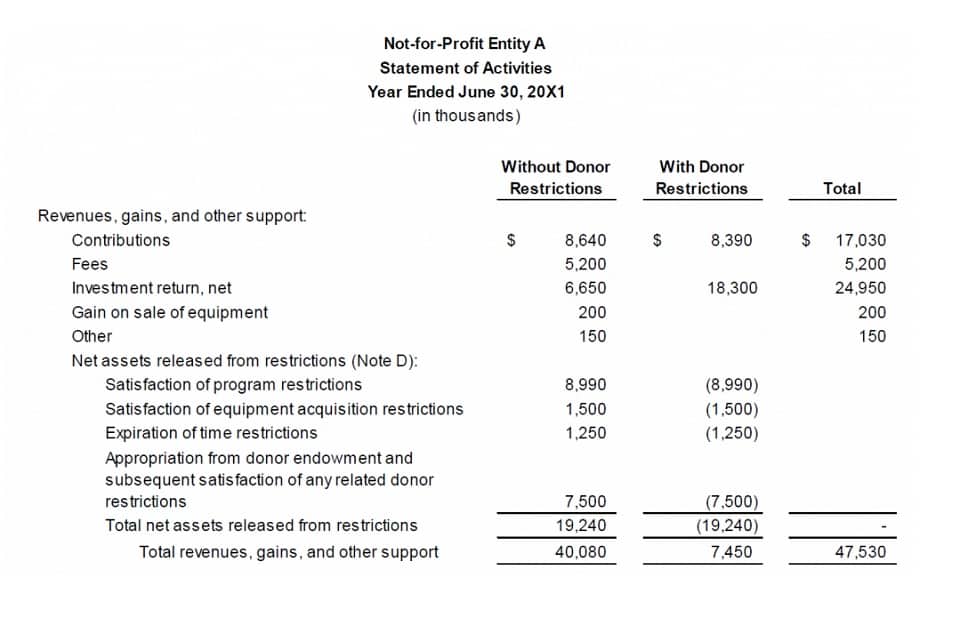What are Outstanding Shares? The Motley Fool

If you’re a market beginner, learning the ins and outs of stocks will help you get started trading, and making money. Read on to learn how to calculate outstanding shares so you can begin mastering the market. The float, for instance, has no bearing on market capitalization or earnings per share.
Weighted Average of Outstanding Shares Definition and Calculation
For the denominator to be consistent with the numerator, it should reflect the earning power resulting from the issuances of new shares or the retirement of old shares. “Shares outstanding” also is a line in the data that is displayed with any stock quote. Their voting rights allow them to participate in policy decision-making, elect directors, participate in corporate policies, etc.
How Do I Know When a Stock’s Number of Shares Outstanding Changes?
How much of the business your one share buys depends on the total common stock outstanding, a figure you can easily determine using the company’s balance sheet. For example, if a company has issued 20 million shares and has treasury stocks of 7 million, its shares outstanding are 13 million. Generally, treasury stock does not count toward the number of shares outstanding. And these shares do not receive dividends nor do they get voting rights. Looking at several examples of stockholders’ equity on different company balance sheets, you may notice a treasury stock line item on several of them. Think of authorized stock as the absolute maximum number of https://www.bookstime.com/ shares that can be available on the market for trading.

Weighted Average Number of Shares
So far, we’ve focused on shares outstanding, whether basic or diluted, at a fixed point in time. In SEC filings, companies will report the total number of shares outstanding on a given day, but in their quarterly and annual figures they must also offer the weighted average shares outstanding. A company may authorize buying back some of its own shares in the market if they believe that the market is undervaluing them and there is enough cash on the balance sheet to do so. In this case, the number of shares outstanding for the firm decreases.
- For information pertaining to the registration status of 11 Financial, please contact the state securities regulators for those states in which 11 Financial maintains a registration filing.
- Using weighted average shares outstanding gives a more accurate picture of the impact of per-share measurements like earnings per share (EPS).
- Thus, from the above details, we can understand the various valuation of common stock.
- Assuming all option holders exercise, Company A would issue 10 million shares.
- We multiplied the number by 12 for each month and did an average over these 12 months.
- Earnings per share is a measure of a company’s valuation, calculated by dividing its profit by the number of shares outstanding.
- Treasury shares are the portion of shares that a company keeps in its own treasury.
What is Weighted Average Shares Outstanding?

The balance sheet is one of the key documents that investors use to evaluate a company, so it’s important to become familiar with it. The numerator in the earning per share (EPS) formula is net income from the income statement, which tracks the financial performance of a company over a period of time. The float, also called the free float or the public float, represents the subset of shares outstanding that are actually available to trade. Whether potential shares are considered anti-dilutive depends on the period. Company A might post a loss in the first quarter, and report a diluted share count of 100 million — but post a profit for the year, with a diluted share count more than twice as high. Consequently, the treatment of stock dividends and splits is different from the treatment used for issuances of shares in exchange for assets or services.
- The inputs you’ll need for this calculation are located on the balance sheet.
- Let us understand the different types of outstanding shares equation through the explanation below.
- In this case, group 1 consists of 100,000 shares that were outstanding for the entire year, while groups 2 and 3 are included in the 20,000 shares issued on 1 April.
- Understanding the dynamics of outstanding shares is integral to comprehending a company’s financial health and market position.
- The “Ending Shares Outstanding” represents the common share count on the first date of the quarter.
Difference Between Shares Issued and Outstanding
- Convertible debt is treated on an “as-converted” basis if the company’s stock is trading above the conversion price.
- The cost basis refers to the original purchase price of an asset or investment for tax purposes.
- In other words, the treasury stock method accounts for the cash that will come in from option and warrant exercise, and assumes that the cash received will offset a portion of the shares issued.
- The shares companies issue are known as authorized shares, which are the maximum number of shares they are lawfully permitted to make available to investors.
- The number of treasury shares for the company, which is the number of shares bought back by the company that is no longer part of outstanding shares and do not receive any dividend, is 1,059,088.
Common stock is the main class of stock that the company issues to investors. Investors who hold common stock exercise control by being able to vote on corporate https://www.facebook.com/BooksTimeInc/ policy and electing the company’s board of directors. The weighted average shares outstanding represents the number of common shares outstanding, after adjusting for the share count changes that occurred throughout a given period. When a company executes a stock split, the number of outstanding shares rises. Stock splits are often initiated to lower the share price, making it more accessible to retail investors and enhancing market liquidity. For example, in a 2-for-1 stock split, the share price is halved, but the outstanding shares double, improving affordability and attracting a broader investor base.

Let’s say that Helpful Fool Company has repurchased 500 shares in this year’s buyback program. The company now has 5,000 authorized shares, 2,000 issued, 500 in treasury stock, and 1,500 outstanding. The outstanding stock is equal to the issued stock minus the treasury stock. When you buy stock in a company, you buy a percentage ownership of that business.
How to Calculate Common Stock Outstanding From a Balance Sheet
If that event occurs on, say, December 15th of the year, it can distort the company’s apparent number of shares outstanding for the year. Calculating the weighted average number of shares resolves the problem by taking into account the length of time that the changed number was in effect. The weighted average number of shares is determined by taking the number of outstanding shares and multiplying it by the percentage of the reporting period for which that number applies for each period. In other words, the formula takes the number of shares outstanding during each month weighted by the number of months that those shares were outstanding. common shares outstanding formula The company issued fewer shares than it was authorized to issue, which is 316,569,578 shares.





Leave a Comment